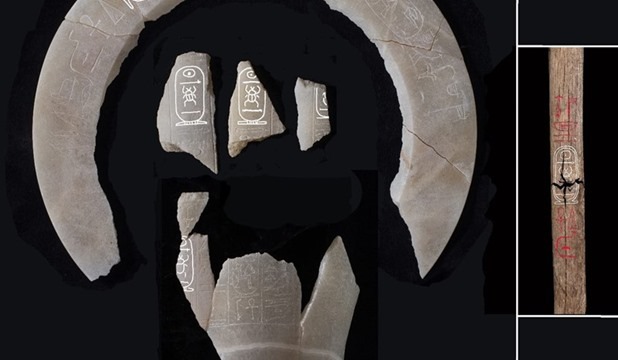For the first time since King Tut’s tomb was unearthed in 1922, archaeologists have uncovered a royal burial site that rewrites history. The tomb of Pharaoh Thutmose II was discovered in Luxor’s Valley of the Kings by a joint British-Egyptian team, marking a once-in-a-century breakthrough!
Why This Is the Biggest Find in 100 Years
This discovery is about solving a royal mystery that has puzzled scholars for generations. Thutmose II’s tomb adds a critical missing piece to our understanding of the 18th Dynasty, a period known for its political intrigue and architectural achievements.
Inside the tomb, archaeologists uncovered alabaster jars inscribed with his name, confirming it as his final resting place. The site also features rare blue and yellow-painted walls, providing one of the few surviving examples of early tomb decoration from this era.
Even more remarkable, excavators found passages from the “Book of Amduat,” a funerary text exclusive to royal burials within the tomb.
Beyond the artifacts, this discovery reshapes our view of Hatshepsut. Evidence suggests she personally oversaw her husband’s burial, challenging previous assumptions about their relationship. No other tomb discovery since King Tut’s has offered this level of insight into a long-lost pharaoh.
This discovery isn’t just an archaeological milestone—it’s a game-changer for Egyptology. Luxor, already a treasure trove of history, now gains even more significance as researchers flock to study the tomb.
The biggest question remains: Where are Thutmose II’s missing treasures? Experts believe that it’s possible they could find more artifacts hidden nearby, and ongoing excavations could uncover even greater finds!
Why Was Thutmose II’s Tomb So Hard to Find?
Unlike other pharaohs of his time, Thutmose II’s burial site remained elusive—until now. Archaeologists uncovered his mummy more than 140 years ago, yet his actual tomb was difficult to track down.
One theory suggests that flash floods shortly after his burial damaged the site, prompting ancient Egyptians to relocate his treasures for safekeeping. This may also explain why his resting place contained fewer grave goods than expected.
Adding to the confusion, the tomb’s location—near Queen Hatshepsut’s burial site—initially led researchers to believe that it belonged to the Egyptian Queen.
How It Compares to Other Major Egyptian Discoveries
Egypt’s rich history is full of monumental finds, but few compare to the impact of Thutmose II’s tomb. Here’s how it stacks up:
- King Tut’s Tomb (1922)—The most famous intact royal tomb, filled with golden treasures.
- The Rosetta Stone (1799)—The key to deciphering hieroglyphics, unlocking Egypt’s written past.
- The Great Pyramid’s Hidden Chamber (2017)—A mystery space inside Khufu’s Pyramid, still unexplored.
- The Valley of the Golden Mummies (1996)—Over 100 beautifully preserved mummies from Greco-Roman Egypt.
What This Means for Egyptology & What’s Next
This breakthrough raises the possibility that other lost royal tombs are still waiting to be found. If Thutmose II’s burial site remained undiscovered for so long, who else might be buried in the Valley of the Kings? This could be the beginning of a new era in archaeology, proving that Egypt’s ancient past still has secrets left to reveal!
WE ALSO SAID: Don’t Miss…Five Egyptian Females Dominating The Field Of Egyptology



